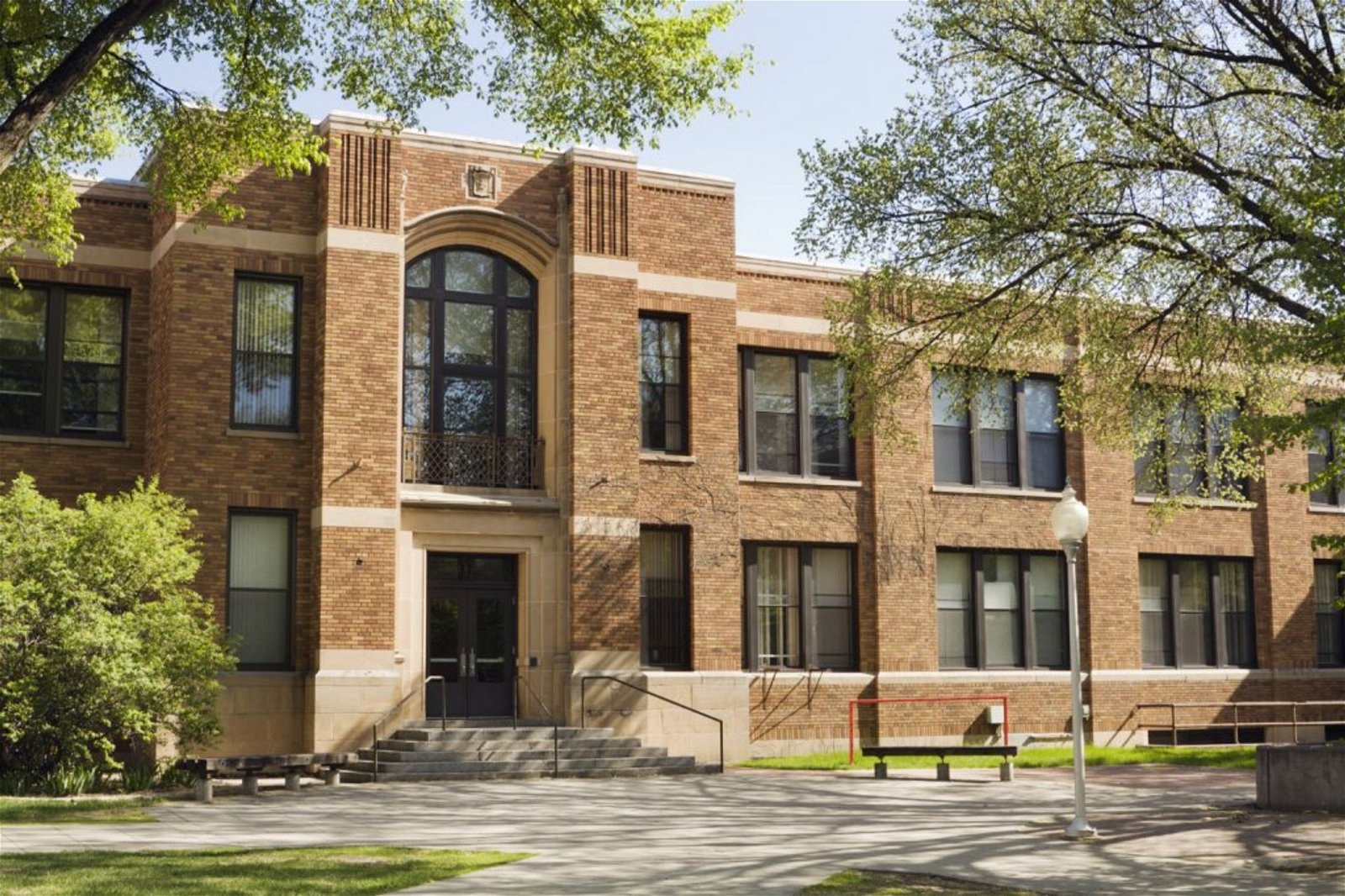What are Key Issues to Consider When Evaluating Student Housing Amid the COVID-19 Pandemic?

The main uncertainty in the student housing sector is COVID-19’s impact on the 2020-2021 school year’s leasing. There is a variety of factors which make the student housing occupancy outlook uncertain, such as: (1) when will students return to campus/will they return for online-only learning; (2) if or when will they sign new leases; and (3) will they require future “outs” or reimbursement provisions for similar future events.
Steady Near-Term; Future is Uncertain.
While college enrollment has increased 29% since 2000 (from 15.3M to 19.7M students), it is projected to grow to only 20.1M students by 2029 (per NCES). From the start of the pandemic through May, the number of high school seniors that no longer plan to enroll in a full-time bachelor’s program this fall is offset by a similar boost of students who are newly choosing to enroll.
While college enrollment numbers for fall 2020 remain largely unchanged at this time, a completely remote semester or big decline in foreign students could shift things dramatically. Since January, over 20% of students have changed their first-choice school toward more in-state public institutions and schools closer to home to keep costs down (McKinsey).
Exhibit 1: Percentage of Students Who Changed Their First-Choice Colleges After COVID-19op U.S. Institutions for International Enrollment in the 2018/19 Academic Year

Source: McKinsey & Company
Enrollment for the 2020/21 academic year is expected to drop 15%, which includes a 25% decline for international students (according to the American Council on Education). The drop in foreign students is expected to have a big toll on U.S. higher education, not only in subsidizing financial aid for domestic students but also in contributing to the U.S. economy ($41B in 2018/19 per NAFSA). At 5.5% of the U.S. higher education population in 2019 (per IIE), foreign students are a key demographic for student housing in certain markets.
In this environment, we expect student housing located near the largest public universities and college towns to outperform those in big cities where population density and social distancing have been the most challenging. However, increased admissions at the most desirable universities should also help offset enrollment declines and keep housing demand stable in those markets.
Exhibit 2: Top U.S. Institutions for International Enrollment in the 2018/19 Academic Year

Source: USNews, IIE, CoStar, CBC Research
That said, if more and more schools end up moving to online-only instruction as the fall semester progresses, will people be willing to pay for accommodations this academic year?
Dorms Need to De-densify.
Colleges are wrestling with how to reopen in the fall. While some schools have said they will go totally virtual, many plan to adopt a mix of online and in-person classes. Others will ask students to return to campus in shifts (rotating the student population by semester).
According to The College Board, 40% of full-time students at public universities live on campus, 40% live in off-campus housing and 20% live with their parents. At private universities, 64% of full-time students live on campus, 19% live in off-campus housing and 17% live with their parents.
Without a readily available vaccine this fall, many schools have announced plans to make campus housing less dense – with fewer roommates, more single dorm rooms, and residential space for quarantining.
Colleges are also looking at neighborhood hotels for temporary dorm solutions in order to reopen campuses in time for the fall. The ability to house and educate students on campus will hinge on whether these institutions can space residents out.
The combination of limited capacity in existing dorms with a healthy desire for an on-campus experience will likely drive increased demand for off-campus housing in the near-term.
Not Every College Market is the Same.
Tier 1 schools (those with at least 25,000 students) continue to attract more capital than Tier 2 (15,000 to 25,000 students) and Tier 3 (7,500 to 15,000 students), driven by steady enrollment numbers and reliable parental guarantors. Despite a slowing economy, investors in these markets are seeing rent collections and leasing volume bounce back from April/May levels, with some exceeding year-ago levels in June.
Exhibit 3: Average Leasing Volume and Rent Rates

Source: CBC Research, CoStar data on 328 schools.
Exhibit 4: Tier 1 Schools Pre-Leasing at Over 75%

Source: CBC Research, CoStar data on 130 schools
While rent performance varied widely (Exhibit 5), Tier 1 markets on average saw the greatest rent growth (+2.8%) compared to Tier 2 (+2.5%) and Tier 3 (+1.6%). On the top end of Tier 1, markets seeing the biggest growth are Johns Hopkins (+19%), University of New Mexico (+15%), USC (+12%), University of Wisconsin (+11%), University of Connecticut (+11%) and Michigan State (+9%). At the bottom end, Colorado State (-13%), Rutgers (-10%), UT Austin (-6%) and UC Berkeley (-5.5%) saw the biggest rent declines primarily due to inventory buildup.
Exhibit 5: Tier 1 Rent Growth Outpaces Tiers 2 & 3

Source: CBC Research, CoStar data on 328 schools.
Between steady enrollment growth and disproportionately higher asking rents per bed (Exhibits 6 & 7), Tier 1 student housing markets are better positioned than Tiers 2 and 3 to outperform as universities disclose their reopening plans. We expect to see Tier 1 markets bounce back to near historical occupancy levels this fall.
Exhibit 6: Tier 1 Schools Show Steady Enrollment Growth Across the Spectrum

Source: CBC Research, CoStar data on 328 schools.
Exhibit 7: Tier 1 Schools Command Much Higher Asking Rents per Bed

Source: CBC Research, CoStar data on 328 schools.
With a considerable amount of institutional capital waiting on the sidelines, Tier 1 cap rates are currently hovering at 5.4% compared to Tier 2 at 6.2%, Tier 3 at 6.3% and the National Average at 5.9%. As we gain more clarity on reopening plans, expect valuations for student housing to follow occupancy returns.
Supply and demand are tightest in Tier 1 markets (Exhibit 8). While enrollment growth at Tier 1 schools is just under 2%, the average vacancy rate for Tier 1 markets is 250 bps lower than the vacancy rates in Tiers 2 and 3. As such, the market should be able to absorb the supply at Tier 1 schools faster than at Tiers 2 and 3.
Exhibit 8: Demand is Strongest for Tier 1 Schools

Source: CBC Research, CoStar data on 328 schools.
While Tier 1 student housing is performing well, there are some instances of overbuilt markets for purpose-built product. On the other hand, opportunities for cap rate compression do exist for certain markets in Tiers 2 and 3 given well-above average rent and enrollment growth rates against flat inventory growth over last year (Exhibit 9).
Exhibit 9: Tier 2 & 3 Opportunities

Source: CBC Research, CoStar data on 198 schools.
Key Amenity Trends to Watch For.
Typical college dorms are quickly becoming a thing of the past as the need for more private space and connectivity become crucial regardless of whether you are in urban infills or cottage-style housing.
The most important amenity in student housing continues to be the Internet – but now students want “really fast” internet to support the ever-increasing usage of streaming services, digital fitness and online classes.
Keyless room entry is gaining popularity for granting students access to campus buildings, dorm rooms, fitness centers, conference rooms and other common spaces. Some developers are already introducing key fobs with built-in contact tracing technology (which tracks a person’s steps as well as the head count of people that walk through a door). This trend will likely be accelerated due to the pandemic.
Given the popularity of Uber and Lyft and the increasing demand for pedestrian- and bike-friendly spaces, many developers have been planning newer sites to have larger ridesharing space and less parking availability.
Stable Asset Class Over the Long-Term.
As of July 14, about 56% of colleges are planning for in-person courses this fall (according to data from 1,170 schools being tracked by The Chronicle for Higher Education). 30% of universities plan to operate a hybrid model for the fall semester, with a blend of in-person and online learning. A few institutions (such as Harvard and Princeton) have announced plans to have some, but not all students back to campus in the fall.
9% of institutions plan to operate online-only this fall, including schools such as the University of Southern California and the entire California State University system.
About 5% of schools remain undecided. These reopening announcements have revived investor interest and given them more certainty about their cash flows for the year. Winners will likely be properties with some type of social distancing built in (i.e., own bathrooms, single occupant rooms).
Jane Thorn Leeson is a Research & Resources Analyst with Coldwell Banker Commercial.
Coldwell Banker Commercial®, provides commercial real estate solutions serving the needs of owners and occupiers in the leasing, acquisition and disposition of all property types. With a collaborative network of independently owned and operated affiliates, the Coldwell Banker Commercial organization comprises almost 200 companies and more than 3,000 professionals throughout the U.S. and internationally
A Trusted Guide in Commercial Real Estate
Coldwell Banker Commercial® provides Commercial Real Estate Services from Property Sales and Leases, to Property Management. Learn how our expansive network of Independently Owned and Operated Affiliates and Real Estate Professionals use their in-depth knowledge of the local market and industry trends to help businesses and investors navigate the complexities of the commercial real estate landscape.






